1. Limitations of Traditional Recognition Programs: Traditional methods are infrequent, top-down, one-dimensional, unengaging, and often fail to meet employee expectations, leading to low engagement and dissatisfaction.
2. Advantages of Modern Recognition Practices: Modern practices focus on frequent, personalized recognition, including peer-to-peer recognition, and consider performance and behavior, enhancing employee motivation and engagement.
3. Key Modern Practices: Organizations should implement practices like instant recognition, peer recognition, gamification, social elements, and rewards that cater to individual employee needs and preferences.
4. Need for Change: Adopting modern recognition methods is essential for attracting, retaining, and engaging top talent, leading to a more motivated workforce and improved business outcomes.
Attracting and retaining top talent has become a highly competitive activity for organizations. Hence, upgrading their traditional employee rewards and recognition programs with modern practices is an important step that organizations must take.

The concept of recognizing and rewarding employees for doing a job well is quite old.
Here are a few characteristics of traditional employee rewards and recognition programs:
1. Largely focused on financial rewards or mementos
2. Centered around annual events such as all-employee meetings, family day, etc.
3. Focus purely on the performance parameters
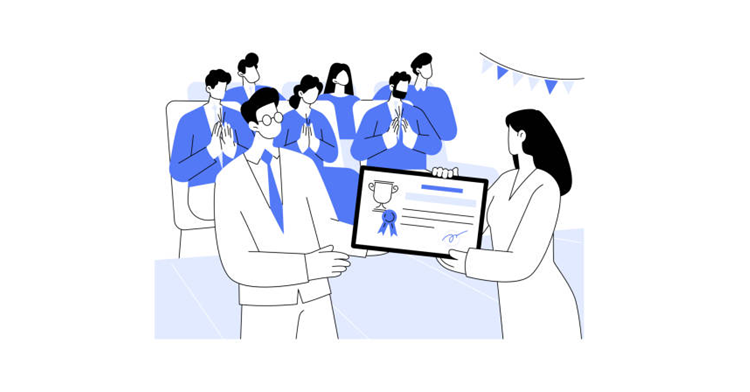
Organizations have realized that traditional employee recognition and reward methods are no longer successful.
According to the results of a study conducted among employees of organizations still following traditional methods of recognition, 35% felt that their leadership just wanted to fill a recognition quota rather than appreciating their efforts.
The same study further revealed that 39% felt that recognition was offered based on favoritism rather than performance.
These programs have failed to drive employee engagement and experience due to the following reasons:
1. Infrequent
2. Top-down
3. One Dimensional
4. Unengaging
5. Out-of-sync
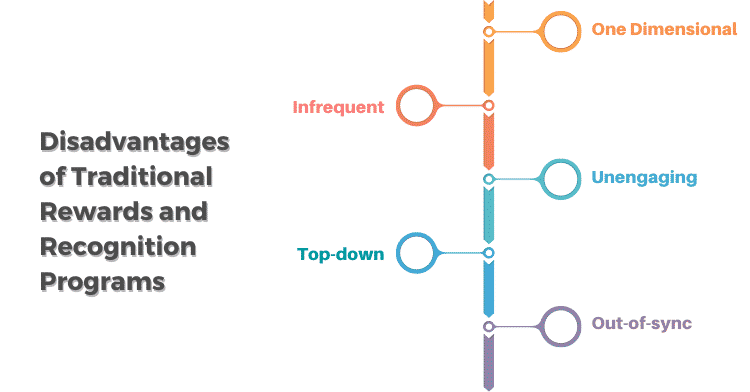

These programs are typically based on award ceremonies held once a year and fail to provide timely and regular recognition.
Hence, many small achievements of employees and the opportunities to motivate them during the year are completely overlooked.

Traditional programs are entirely based on the decisions of the management and the HR, with the recommendations of the line managers.
Hence, there is no scope for any recommendations or inputs from co-workers.
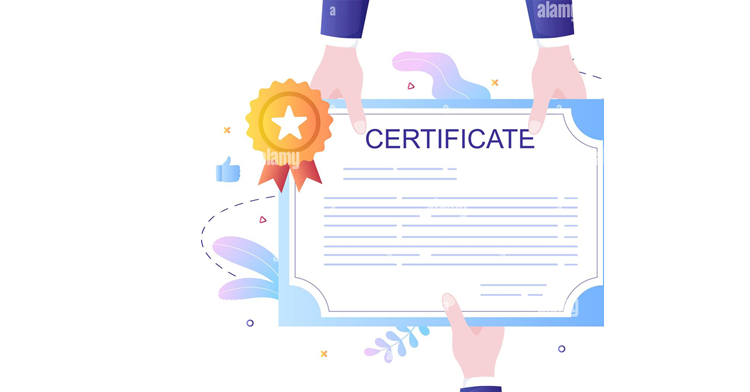
These recognition programs consider only the outcomes and not the effort or the means.
Hence, important aspects of employee behavior such as innovation, integrity, collaboration, and demonstration of core values of the organization are largely ignored.

Also, traditional reward programs tend to be unexciting, unimaginative, and repetitive.
Hence, they tend to become uninteresting over time and may fail to motivate or inspire employees.
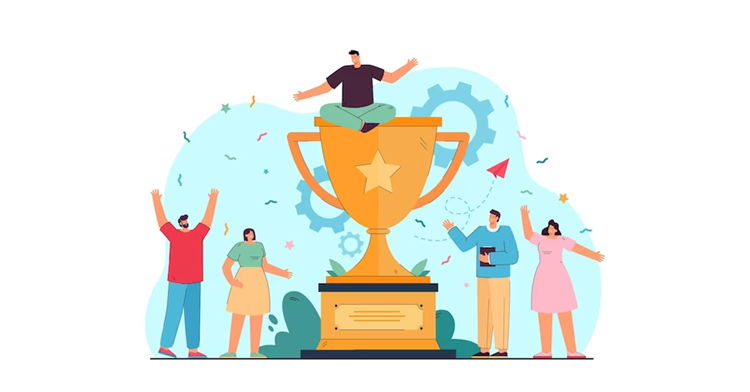
The programs cannot meet the expectations of the employees, especially the millennials, who are a growing tribe within the organization.
They lack the elements that can help employees connect with the program.
These are the biggest reasons why traditional rewarding approaches are gradually becoming obsolete.

Today, the world of business is entirely talent-driven. A modern, compelling reward system is essential for organizations to attract, motivate, and retain top talent.
Implementing practices such as peer recognition, intrinsic rewards, etc. can help in creating a more satisfied, engaged, and productive workforce, which in turn can drive better business results for the organization.

Modern rewarding practices are more personalized, comprehensive, and social. They are designed to enhance the workforce’s happiness by catering to their needs and expectations.
Here are a few of the critical modern reward practices that traditional organizations need to adopt:
1. Recognize Frequently/ Instantly
2. Introduce Peer-to-Peer Recognition
3. Recognize Performance + Behavior
4. Add Gamification and Social Elements
5. Focus on Employee Needs/ Expectations
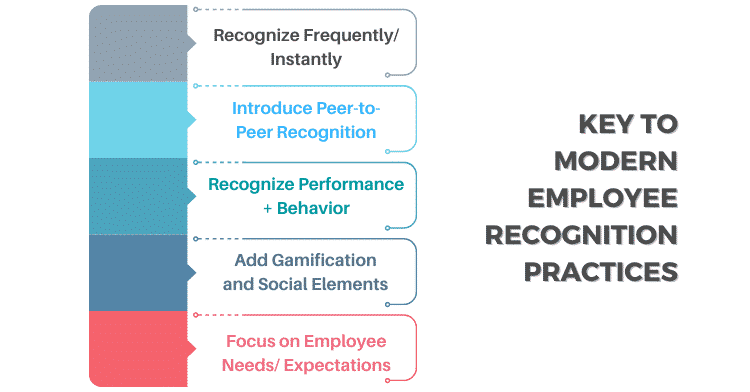

Line managers and team leads should be empowered to reward and recognize their team members for their achievements as and when they happen, without waiting till the end of the year.
On-the-spot recognition or spot awards for small or short-term achievements should be critical to all employee rewards and recognition programs.
These can be clubbed with annual or quarterly awards for consistent or high-impact performance.

A completely top-down approach to employee rewards and recognition can often make the program seem biased and unfair.
Hence, involving co-workers in the recognition process in the form of peer-to-peer recognition or peer-nominated rewards can add a social dimension to the entire program. It can also make it more genuine and trustworthy.

Considering the ‘means’ and not just the ‘ends’ for employee rewards and recognition is crucial.
Hence, employees need to be recognized for their intent, effort, and behavior along with the results produced. Therefore, it can help in building a strong organizational culture based on core values.
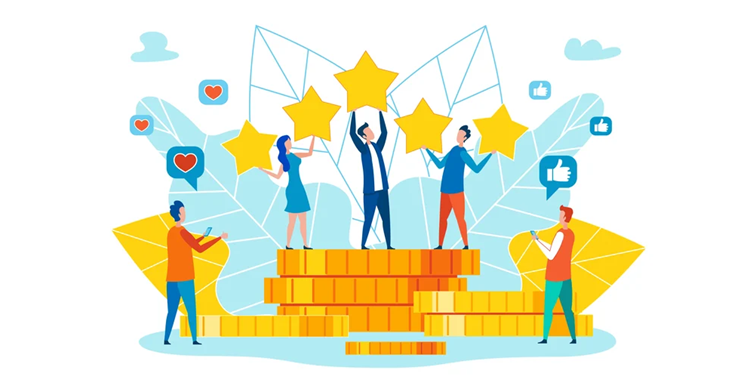
Organizations can also consider creating leaderboards to list the top-performing employees for a given period. Hence, it can help motivate employees to perform at a higher level and get featured on the leaderboard.
Employees today love to show off their achievements. So, a wall of fame in the workplace is an effective way of announcing employee achievements.
Other platforms, such as internal collaboration tools and public social media, can be leveraged.

Employees today, especially, look for personalization and freedom of choice.
The employee rewards and recognition programs should provide flexible and customizable rewards such as gift cards and experiences, that enable to pick and choose what they want based on their personal preferences.
This can be more effective than the traditional approach of presenting souvenirs and trophies.

Traditional organizations should look at adopting digital employee recognition platforms that can come with the requisite features and functionalities.
Hence, these can help them seamlessly incorporate modern employee rewards and recognition practices into their programs.
It is high time for traditional organizations to start implementing modern employee rewards and recognition practices to build a highly motivated and engaged workforce by attracting, engaging, and retaining top talent; and driving a higher level of business growth.

Lead author: Sagar Chaudhuri, the Co-Founder and CEO of HiFives. He is an HR Tech Evangelist with over 25 years of corporate and entrepreneurship experience. In the past, Sagar has worked in leadership roles with companies such as Genpact, Infosys, and ICICI Bank. He has an engineering degree from IIT Kharagpur and an MBA from IIM Lucknow. Connect on LinkedIn
To stay updated on the latest HiFives blogs, follow us on Twitter (@MyHiFives)